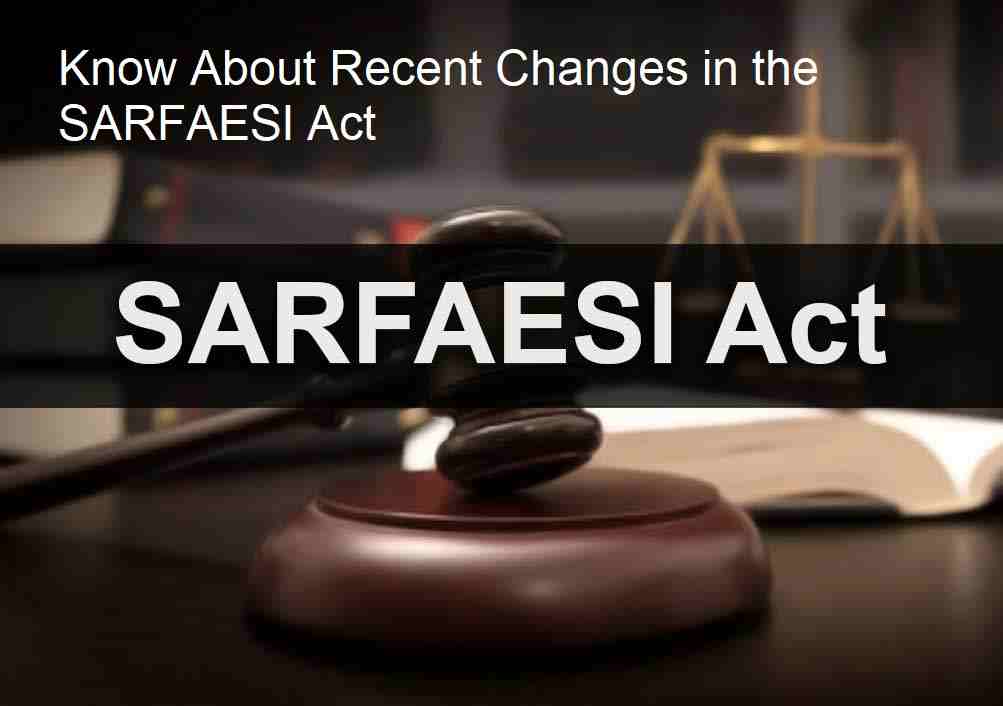The term "SARFAESI auction" refers to an auction conducted under the provisions of the Securitisation and Reconstruction of Financial Assets and Enforcement of Security Interest Act, 2002 (SARFAESI Act). This act is an Indian law that empowers banks and financial institutions to recover unpaid loans by taking possession of and selling the properties that were offered as security or collateral against the loan.
When a borrower defaults on a loan, and the lender has the legal right to enforce the security interest (usually a property), they can initiate a SARFAESI auction. This auction is a process by which the lender sells the mortgaged or secured property to recover the outstanding loan amount. The auction is typically open to the public, and the highest bidder at the auction is awarded the property. The proceeds from the auction are then used to settle the debt owed to the lender, with any surplus amount, if present, being returned to the borrower.
SARFAESI auctions are conducted as a means of expedited loan recovery and are subject to specific rules and procedures outlined in the SARFAESI Act to protect the interests of both the lender and the borrower.
Are you struggling to repay your HDFC loan, and worried about the bank seizing and auctioning off your mortgaged property? Have you heard of the SARFAESI Act and wondered how it affects your rights as a borrower or a buyer? In this article, we will explain what HDFC auction SARFAESI means, how it works, who can participate, and what are the benefits and risks involved.
What is HDFC Auction SARFAESI?
HDFC is one of the largest private banks in India, offering various types of loans to individuals and businesses. When you take a loan from HDFC, you have to provide collateral in the form of immovable property, such as a house, land, or commercial premises. This property acts as security for the loan, ensuring that HDFC can recover its dues even if you default on your payments.
Latest HDFC e-auction Properties:
https://www.eauctionsindia.com/bank/hdfc-limited
https://www.eauctionsindia.com/bank/hdfc-bank
https://www.eauctionsindia.com/bank/hdfc-credila-financial-services-ltd
However, if you default on your loan for a prolonged period, HDFC has the right to take possession of your property and sell it to recover its dues. This process is governed by the Securitization and Reconstruction of Financial Assets and Enforcement of Security Interest (SARFAESI) Act, 2002. SARFAESI allows banks and financial institutions to take legal action against defaulters and enforce their security interests without court intervention, subject to certain conditions.
HDFC auction SARFAESI is a public auction conducted by HDFC to sell the mortgaged property of a defaulter under SARFAESI. HDFC can initiate the auction process after issuing a notice to the borrower, giving them 60 days to repay the dues or raise an objection. If the borrower fails to comply, HDFC can appoint a Recovery Agent and publish a notice of auction in at least two newspapers, one in vernacular language, and another in English.
How does the HDFC auction SARFAESI work?
HDFC auction SARFAESI follows a set of rules and procedures to ensure transparency and fairness in the auction process. Here are the steps involved:
-
Notice of Default: HDFC sends a notice of default to the borrower, informing them of the outstanding amount, the interest, and the charges due. The borrower can request a copy of the loan account statement and raise an objection within 60 days from the date of notice.
-
Demand Notice: If the borrower fails to repay or raises an objection, HDFC sends a demand notice to the borrower, asking them to repay the dues within 60 days from the date of the notice.
-
Possession Notice: If the borrower fails to comply with the demand notice, HDFC can take possession of the mortgaged property and issue a possession notice to the borrower and any other interested parties.
-
Sale Notice: After taking possession, HDFC can appoint a Recovery Agent to assess the value of the property and publish a sale notice in at least two newspapers, one in vernacular language, and another in English. The sale notice must contain the reserve price, the date, time, and venue of the auction, and the terms and conditions of the sale.
-
Auction: The auction is conducted in public, and any interested party can participate by depositing a refundable earnest money deposit (EMD) of 10% of the reserve price. The highest bidder wins the auction, and the sale proceeds are used to repay the dues to HDFC, and the remaining amount, if any, is refunded to the borrower.
Who can participate in the HDFC auction SARFAESI?
HDFC auction SARFAESI is open to all eligible bidders who comply with the auction rules and pay the EMD. However,
HDFC may impose certain eligibility criteria or restrictions on the bidders, depending on the nature and location of the property, and the purpose of the loan. For example, if the property is a residential house, HDFC may give preference to bidders who intend to use it for their occupation, rather than for investment or commercial purposes. Similarly, if the property is situated in a restricted or disputed area, HDFC may not allow non-residents or non-citizens to bid.
To participate in the HDFC auction SARFAESI, the bidder must also fulfill the following conditions:
- Have a valid PAN card and Aadhaar card, or any other government-issued identity proof.
- Pay the EMD through a bank draft or online transfer, as specified in the sale notice.
- Conduct due diligence on the property, including checking the title, encumbrances, and physical condition.
- Attend the pre-auction inspection and clarify any doubts or queries with the Recovery Agent or HDFC officials.
- Read and understand the terms and conditions of the sale, and be ready to comply with them if the bid is successful.
Conclusion
HDFC auction SARFAESI is a legal and effective mechanism for banks and financial institutions to recover their dues from defaulters, using the power of security interest and public auction. However, the process can also have significant consequences for the borrower and the buyer, who need to understand the rules, risks, and benefits of the auction before participating. If you are facing an HDFC loan default or considering buying a property through HDFC auction SARFAESI, it is advisable to seek professional advice and do your homework thoroughly.






